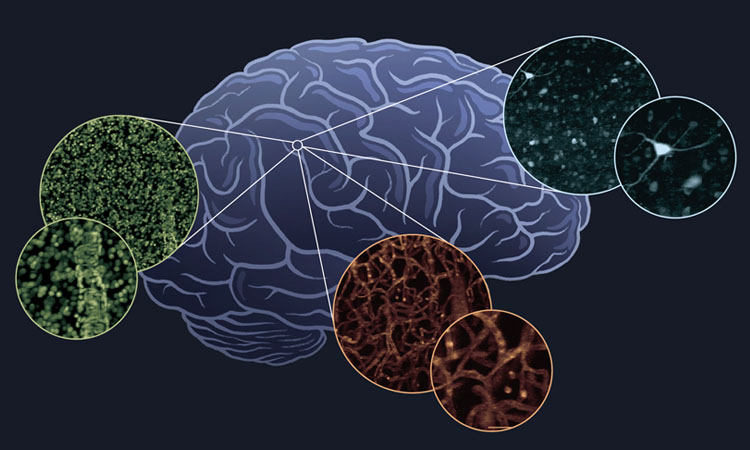Ideas
Building a “Google Earth” for the Human Brain
A research team led by Optica Fellow Elizabeth Hillman hopes to create an imaging pipeline that can map every cell in the brain—at unprecedented speeds.
 A new project seeks to build a pipeline for rapid imaging and mapping of the more than 180 billion cells in a normal human brain. [Hillman Lab / Columbia University Zuckerman Institute]
A new project seeks to build a pipeline for rapid imaging and mapping of the more than 180 billion cells in a normal human brain. [Hillman Lab / Columbia University Zuckerman Institute]
In the past decade, researchers have made incredible progress capturing detailed 3D maps of brains—the brains of mice. But the human brain, comprising more than 180 billion cells, is vastly more complex than the mouse version, with a mere 100 million. Mapping the detailed structure and organization of the tangle of cells in normal human brains—a potential boon for studies of behavior, cognition and neurodegenerative diseases—is consequently orders of magnitude slower and more difficult than in mice.
…Log in or become a member to view the full text of this article.
This article may be available for purchase via the search at Optica Publishing Group.
Optica Members get the full text of Optics & Photonics News, plus a variety of other member benefits.
